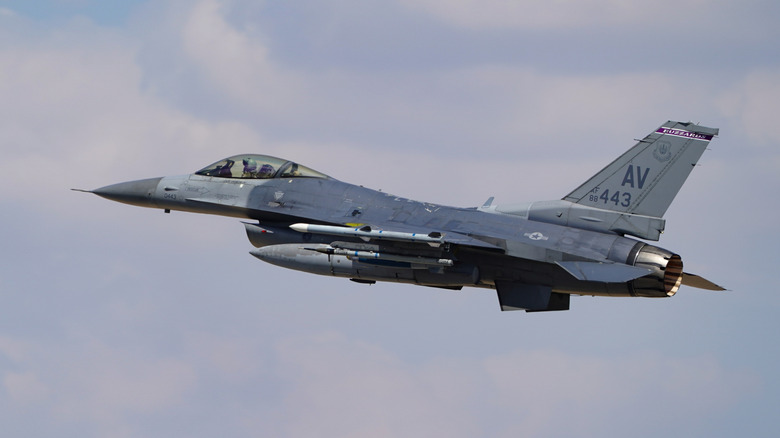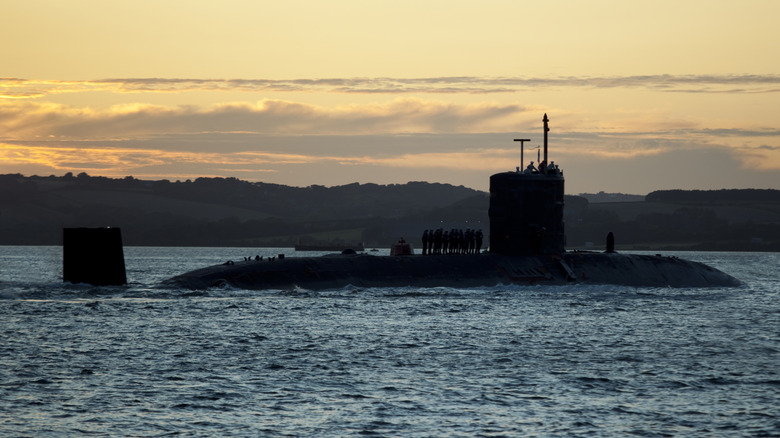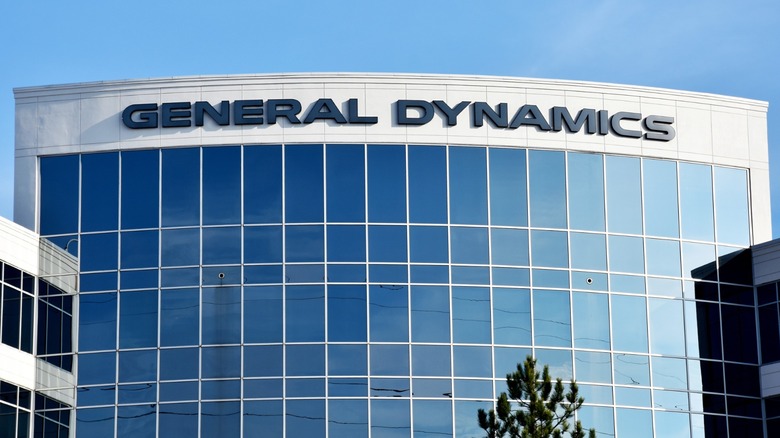Who Owns General Dynamics Today? A Look At The Defense Company's History
You may know General Dynamics as one of the United States' leading defense contractors; the true brain behind the F-16 Fighting Falcon, the builder of the world's first nuclear-powered submarine, and a giant corporation with tens of billions of dollars in revenue. While it would certainly count as one of the most cutting-edge military solutions companies today, the story of what is now General Dynamics actually started in the 19th century when German-born American financier, Isaac L. Rice, partnered with Irish engineer John Philip Holland and founded a submarine development company called Electric Boat Company in 1899.
Electric Boat would go on to produce submarines and PT boats for the U.S. military, providing these vessels through world wars and Cold War weapons programs. In 1952, Electric Boat folded into a larger corporate entity, known as General Dynamics, adding aerospace, land systems, and high-tech communications to its portfolio. After many acquisitions, it eventually reshaped into the defense juggernaut you know it as today, holding a century-long semi-duopoly with Huntington Ingalls Industries (HII) on the manufacturing of U.S. Navy warships.
Despite being originally founded by a single man, the company is not in the hands of any one family or private entity, instead, it's a publicly traded company on the New York Stock Exchange under the ticker GD. Technically, the company is owned by thousands of shareholders around the world. According to Investing.com, the largest of these shares are held by institutional investors like Vanguard and BlackRock, with mutual funds, ETFs, and individual investors filling in the rest.
The Electric Boat Company used to sell John Philip Holland's submarines
In 1873, Irish engineer and schoolteacher John Philip Holland emigrated to the United States and settled in Paterson, New Jersey. While teaching, he also had a fascination with undersea warfare, and began sketching designs for a vessel that could actually function underwater. At the time, submarines existed in theory and crude experiments, with mostly impractical designs that relied on hand cranks or bulky steam engines.
Holland's breakthrough was to pair a gasoline engine for surface travel with electric motors for submerged propulsion, a combination that finally made a viable submarine. His prototype, Holland VI, launched in 1897, it was 53 feet long, carried a nine-man crew, and featured a torpedo tube and two dynamite guns. It could dive, maneuver, and resurface with a reliability no inventor before had achieved.
Two years later, financier Isaac L. Rice founded the Electric Boat Company in a merger with the John P. Holland Torpedo Boat Company to commercialize Holland's design. By 1900, the U.S. Navy commissioned Holland VI as the USS Holland (SS-1), making it the military's first modern submarine and the start of its submarine fleet. This design is why John Phillip Holland is considered the father of the modern submarine. However, due to internal company trouble, he wouldn't stay with Electric Boat Company, resigning in 1904.
The companies and acquisitions that make General Dynamics what it is today
The early push into aerospace came with the purchase of Canadair, Convair, and Cessna, giving General Dynamics a strong foothold in aircraft and missile development before the divisions wound down in the 1990s. It was replaced with the acquisition of Gulfstream Aerospace in 1999 and Jet Aviation in 2008, allowing GD add commercial civilian aircraft to its offerings.
Then, it moved to expand its shipbuilding presence by acquiring Bath Iron Works in 1995, delivering the Navy's Arleigh Burke-class destroyers, and NASSCO in 1998, which became the Navy's West Coast yard for auxiliary and support ships. Thus, the Marine Systems group was born, and it remains the company's strongest business.
On land, General Dynamics acquired Chrysler Defense in 1982, turning it into General Dynamics Land Systems, the division that manufactured some of the M1 Abrams tanks. The company also made acquisitions in Europe, purchasing Santa Bárbara Sistemas in Spain in 2001, and MOWAG in Switzerland and Steyr-Daimler-Puch Spezialfahrzeug in Austria, both in 2003, then integrating them into General Dynamics European Land Systems. Together, they added vehicles such as the Piranha, Eagle, and Pandur to the GD portfolio.
The Technologies segment started with the acquisition of Computing Devices International in 1997, followed by parts of GTE Government Systems in 1999. The company then continued to build its secure communications and mission systems capabilities with purchases like Veridian and Digital System Resources in 2003. A major step came later in 2006 with the acquisition of Anteon International, a federal IT integrator, and in 2018 with CSRA, cementing General Dynamics Information Technology (GDIT) as one of the largest government IT service providers in the U.S..


